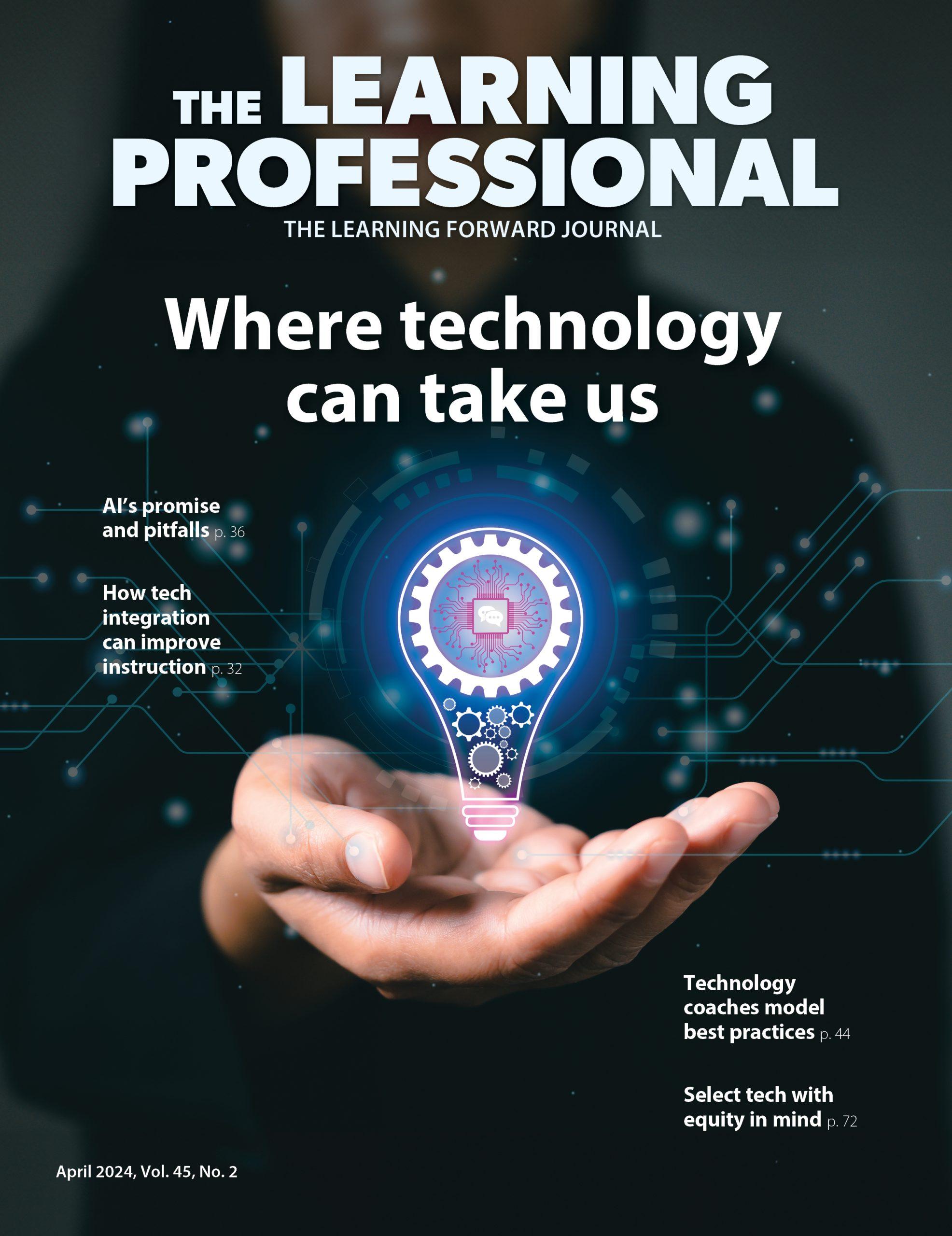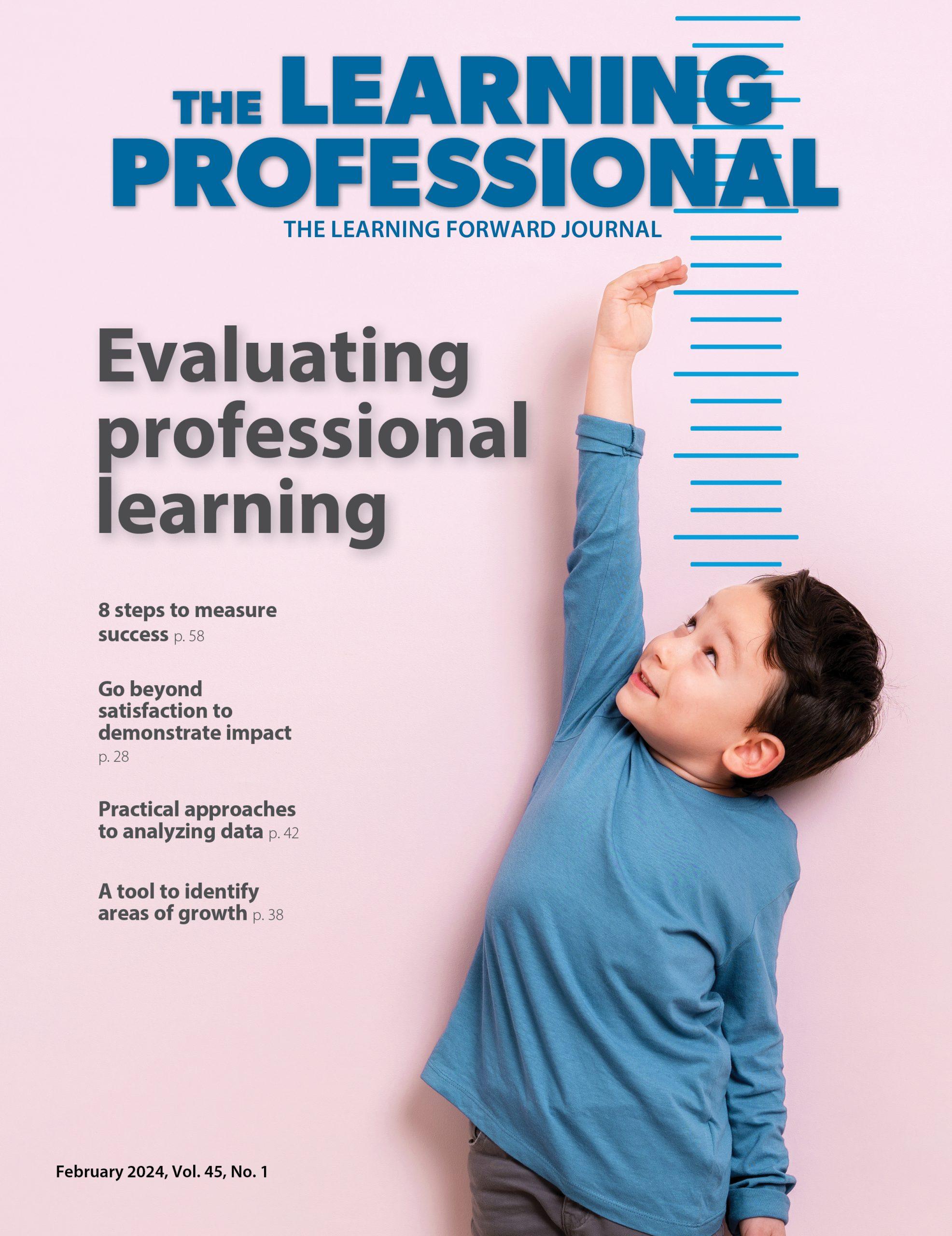FOCUS
Authors clarify what personalized learning is - and what it can do
By Suzanne Bouffard
Categories: Equity, Personalization, TechnologyAugust 2019
Vol. 40 No. 4
How do we engage every student in rigorous and meaningful learning? How do we ensure that each of them is prepared for a successful future, whatever he or she might choose that to be? Our equity imperative compels us to meet the unique needs of each student, and therefore to prepare all educators to achieve that ambitious goal. A growing focus on this goal is helping to fuel a movement for personalizing learning.
In this issue of The Learning Professional, we embrace the current dialogue and debate about what personalized learning is and can be, giving voice to diverse perspectives and approaches.(See, for example, “What does personalized learning mean? Experts weigh in” on p. 28.) Some of the issue’s authors write about schools in which students determine their own projects and learning goals. Others paint a picture in which all students access the same content but at their own pace. All share a common goal of educational equity, and all place a high priority on preparing and supporting educators with quality professional learning. In this issue of #LearnFwdTLP, @LearningForward embraces the current dialogue about what personalized learning is and can be to meet all students’ needs. Share on X
In this issue, the expanded Focus section includes articles on how professional learning can equip teachers to personalize learning for their students as well as articles on how educators can experience personalization themselves.
As they illustrate, personalization does not mean educators engage in professional learning disconnected from one another or from collective goals (see, for example, “One vision, many paths”on p. 54). Rather, it means their learning is tied to specific needs and is job-embedded, consistent with the Standards for Professional Learning (Learning Forward, 2011).
As we explore varying ways of personalizing learning to students and educators with diverse needs, it is important to consider the role of race, class, and culture. As Sonia Caus Gleason(p. 10) and Sukey Leshnick, Jackie Statum Allen, and Daniela Berman (p. 36) point out, personalization may have different meanings and implications depending on one’s background. As we explore varying ways of personalizing learning to students and educators with diverse needs, it is important to consider the role of race, class, and culture. #LearnFwdTLP Share on X
As always, our professional learning efforts should include thoughtful consideration of how the terms and approaches we use are interpreted by diverse families and school settings.
NEW ONLINE CONTENT
With this issue, we are adding exclusive online content to our new The Learning Professional website: lfstage.xyz/the-learning-professional.
The new site has a more engaging look and feel, easier access to articles, and a more robust search function. You’ll find articles by Marion Wilson about a multitiered professionallearning approach that groups teachers according to their needs and by Laureen Avery about a microcredentialing effort for mainstream teachers of English learners.
On the subject of new content, we’ve posted our call for submissions for upcoming issues of The Learning Professional in 2020 on the website at lfstage.xyz/the-learningprofessional/write-for-us. Check out the topics and keep the great articles coming.
References
Learning Forward. (2011). Standards for Professional Learning. Oxford, OH: Author

Suzanne Bouffard is senior vice president of communications and publications at Learning Forward. She is the editor of The Learning Professional, Learning Forward’s flagship publication. She also contributes to the Learning Forward blog and webinars. With a background in child development, she has a passion for making research and best practices accessible to educators, policymakers, and families. She has written for many national publications including The New York Times and the Atlantic, and previously worked as a writer and researcher at the Harvard Graduate School of Education. She has a Ph.D. in developmental psychology from Duke University and a B.A. from Wesleyan University. She loves working with authors to help them develop their ideas and voices for publication.
Categories: Equity, Personalization, Technology
Recent Issues
LEARNING TO PIVOT
August 2024
Sometimes new information and situations call for major change. This issue...
GLOBAL PERSPECTIVES
June 2024
What does professional learning look like around the world? This issue...
WHERE TECHNOLOGY CAN TAKE US
April 2024
Technology is both a topic and a tool for professional learning. This...
EVALUATING PROFESSIONAL LEARNING
February 2024
How do you know your professional learning is working? This issue digs...










